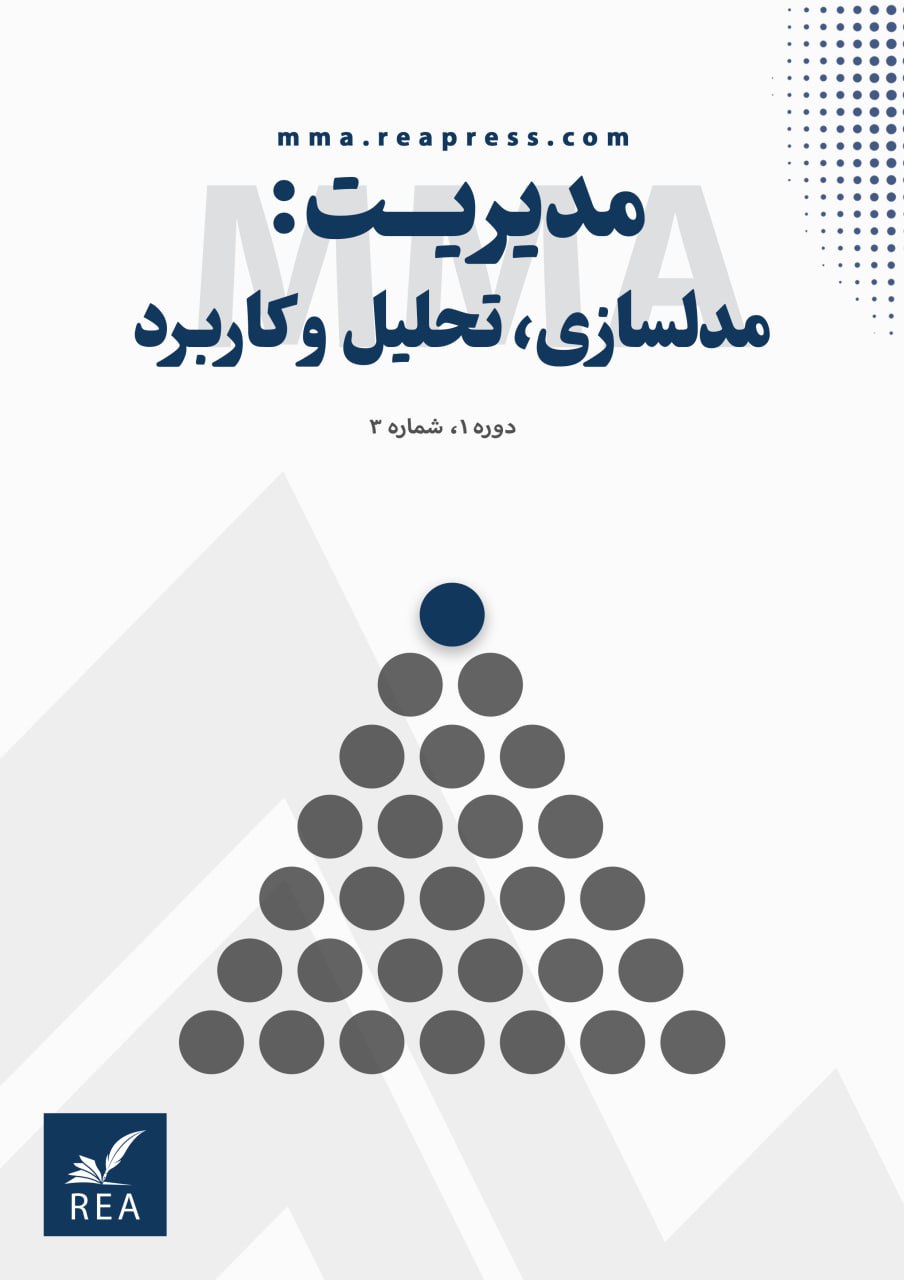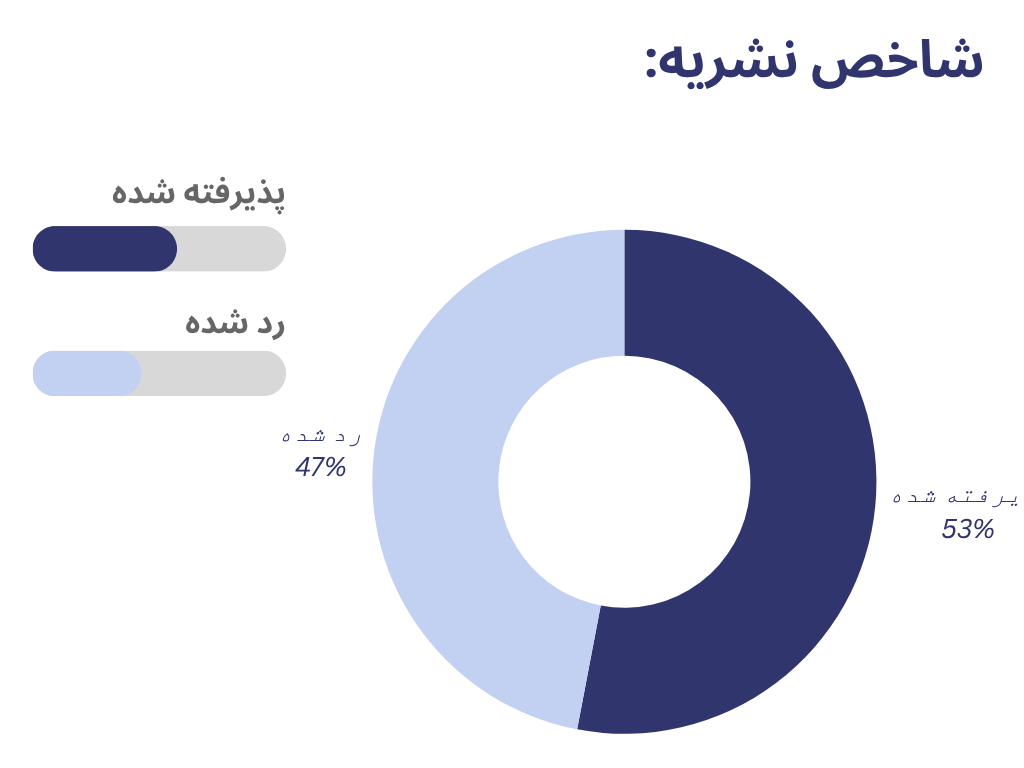تحلیل نقش رسانههای اجتماعی در پیدایش و تشدید بحرانهای اجتماعی: یک مطالعه AHP
چکیده
هدف: این پژوهش با هدف تحلیل نقش رسانههای اجتماعی در شکلگیری و تشدید بحرانهای اجتماعی و اولویتبندی کارکردها و ویژگیهای موثر آنها انجام شد.
روششناسی پژوهش: این مطالعه به روش ترکیبی (کیفی-کمی) و با استفاده از تکنیک تحلیل سلسلهمراتبی انجام گرفت. دادهها از طریق مصاحبه با 10 خبره و مطالعات کتابخانهای گردآوری و با نرمافزارهای AHP و کدگذاری مبتنی بر نظریه بنیادی تحلیل شد.
یافتهها: بر اساس نتایج AHP، در بین ویژگیهای رسانههای اجتماعی، «محتوا محوربودن» با امتیاز 0/9 بیشترین تاثیر را در جذب مخاطب در بحران دارد. در بین کارکردها نیز «اطلاعرسانی همگانی» با امتیاز 0/85 بهعنوان موثرترین عامل در هدایت و تحریک مخاطبان در بحرانهای اجتماعی شناسایی شد.
اصالت/ارزش افزوده علمی: ارزش اصلی این تحقیق در ارایه یک مدل مفهومی بومی و اولویتبندی کمی عوامل کلیدی تاثیرگذار است که میتواند مبنای مناسبی برای سیاستگذاری و مدیریت فعالانه رسانههای اجتماعی در مواجهه با بحرانهای اجتماعی در ایران باشد.
کلمات کلیدی:
ارتباطات بحران، بحرانهای اجتماعی، تحلیل سلسلهمراتبی، رسانههای اجتماعیمراجع
- [1] Bell, D. (2006). An introduction to cybercultures. Routledge. https://doi.org/10.4324/9780203192320
- [2] Hadi, D., Aghaei, D., & Saeed Sadeghi, S. (2012). Exploring the role of the Internet and new social media in developments in the Middle East and North Africa region (informing, organizing, and rapidly spreading developments). Foreign relations quarterly, 4(2), 21-34. (In Persian). https://dor.isc.ac/dor/20.1001.1.20085419.1391.4.2.8.6
- [3] Hashemizadeh, S. R., & Ansarinasab, B. (2018). The Virtual Age: A reflection on the functions and sites of virtual communities. (In Persian). Tisa Saghar Mehr Institute. https://B2n.ir/yn4970
- [4] Barker‐Plummer, B. (1996). The dialogic of media and social movements. Peace review, 8(1), 27–33. https://doi.org/10.1080/10402659608425926
- [5] Sarukhani, B., & Qadi, R. (2012). The internet and national identity among users. Quarterly journal of communication culture (scientific and promotional), 2(5), 51–70. https://journals.iau.ir/article_510655.html
- [6] Qi, Y., Zhao, M., Geng, T., Tu, Z., Lu, Q., Li, R., … ., & Gao, Y. (2024). The relationship between family functioning and social media addiction among university students: A moderated mediation model of depressive symptoms and peer support. BMC psychology, 12, 341. https://doi.org/10.1186/s40359-024-01818-2
- [7] Morahan-Martin, J. (2007). Internet use and abuse and psychological problems. In Oxford handbook of internet psychology (pp. 331–345). Oxford University Press Oxford, UK. https://B2n.ir/sb3396
- [8] Nalwa, K., & Anand, A. (2004). Internet addiction in students: A cause of concern. Cyberpsychology & behavior: The impact of the internet, multimedia and virtual reality on behavior and society, 6, 653–656. https://doi.org/10.1089/109493103322725441
- [9] Abbasi Ghaderi, M., Khalili Kashani, M., & Sazmand, B. (2011). The impact of the internet on national identity. National studies quarterly, 12(45), 179–183. (In Persian). https://dor.isc.ac/dor/20.1001.1.1735059.1390.12.45.9.3
- [10] Bahar, M., & Bijani, M. J. (2020). Social media and global identity: A study of the Instagram platform. Global media journal-persian edition, 14(2), 53-76. (In Persian). https://doi.org/10.22059/gmj.2020.76660
- [11] Abbasi, H., & Shariat, J. (2019). The political function of virtual social networks. National security, 8(30), 127–150. (In Persian). https://ns.sndu.ac.ir/article_347.html
- [12] Kebriyaizadeh, H. (2011). The role of social networks in shaping political and cultural developments with a focus on the waves of Islamic awakening in the Middle East. International cultural relations studies, 1(1), 30-37. (In Persian). http://noo.rs/ZAVZu
- [13] Shojae Moadab, H. R., Hosseini Tash, S. A., Agaee, M., & Amiri Moghadam, R. (2020). A transition model for onset cycles of cyberspace effected security-political crisis. Journal of national security, 10(35 ), 179-204. (In Persian). https://sid.ir/paper/94119/en
- [14] Ziaei Parvar, H. (2009). Cyber soft warfare in the social media space. Media scientific quarterly, 20(2), 9–48. (In Persian). https://dor.isc.ac/dor/20.1001.1.10227180.1388.20.2.1.0
- [15] Gibson, W. (1984). Neuromancer. New York: Ace Books. https://doi.org/10.1007/978-3-031-56627-1
- [16] Abtahi, S. H., Yavari Bafeghi, A. H., & Esmaeili, H. R. (2001). Designing a model for predicting social crises in order to prevent them by NAJA. Order & security research journal, 4(4), 23. (In Persian). https://www.magiran.com/p1055015







